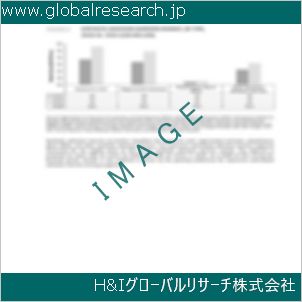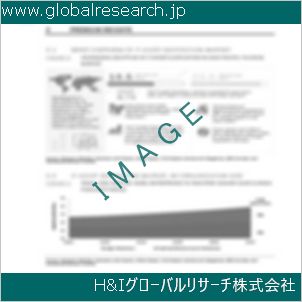1 Nintedanib Esylate Market Overview
1.1 Product Definition
1.2 Nintedanib Esylate Segment by Type
1.2.1 Global Nintedanib Esylate Market Value Growth Rate Analysis by Type 2022 VS 2029
1.2.2 98% Purity
1.2.3 99% Purity
1.3 Nintedanib Esylate Segment by Application
1.3.1 Global Nintedanib Esylate Market Value Growth Rate Analysis by Application: 2022 VS 2029
1.3.2 Pharmaceutical Intermediates
1.3.3 Organic Intermediate
1.3.4 Other
1.4 Global Market Growth Prospects
1.4.1 Global Nintedanib Esylate Production Value Estimates and Forecasts (2018-2029)
1.4.2 Global Nintedanib Esylate Production Capacity Estimates and Forecasts (2018-2029)
1.4.3 Global Nintedanib Esylate Production Estimates and Forecasts (2018-2029)
1.4.4 Global Nintedanib Esylate Market Average Price Estimates and Forecasts (2018-2029)
1.5 Assumptions and Limitations
2 Market Competition by Manufacturers
2.1 Global Nintedanib Esylate Production Market Share by Manufacturers (2018-2023)
2.2 Global Nintedanib Esylate Production Value Market Share by Manufacturers (2018-2023)
2.3 Global Key Players of Nintedanib Esylate, Industry Ranking, 2021 VS 2022 VS 2023
2.4 Global Nintedanib Esylate Market Share by Company Type (Tier 1, Tier 2 and Tier 3)
2.5 Global Nintedanib Esylate Average Price by Manufacturers (2018-2023)
2.6 Global Key Manufacturers of Nintedanib Esylate, Manufacturing Base Distribution and Headquarters
2.7 Global Key Manufacturers of Nintedanib Esylate, Product Offered and Application
2.8 Global Key Manufacturers of Nintedanib Esylate, Date of Enter into This Industry
2.9 Nintedanib Esylate Market Competitive Situation and Trends
2.9.1 Nintedanib Esylate Market Concentration Rate
2.9.2 Global 5 and 10 Largest Nintedanib Esylate Players Market Share by Revenue
2.10 Mergers & Acquisitions, Expansion
3 Nintedanib Esylate Production by Region
3.1 Global Nintedanib Esylate Production Value Estimates and Forecasts by Region: 2018 VS 2022 VS 2029
3.2 Global Nintedanib Esylate Production Value by Region (2018-2029)
3.2.1 Global Nintedanib Esylate Production Value Market Share by Region (2018-2023)
3.2.2 Global Forecasted Production Value of Nintedanib Esylate by Region (2024-2029)
3.3 Global Nintedanib Esylate Production Estimates and Forecasts by Region: 2018 VS 2022 VS 2029
3.4 Global Nintedanib Esylate Production by Region (2018-2029)
3.4.1 Global Nintedanib Esylate Production Market Share by Region (2018-2023)
3.4.2 Global Forecasted Production of Nintedanib Esylate by Region (2024-2029)
3.5 Global Nintedanib Esylate Market Price Analysis by Region (2018-2023)
3.6 Global Nintedanib Esylate Production and Value, Year-over-Year Growth
3.6.1 North America Nintedanib Esylate Production Value Estimates and Forecasts (2018-2029)
3.6.2 Europe Nintedanib Esylate Production Value Estimates and Forecasts (2018-2029)
3.6.3 China Nintedanib Esylate Production Value Estimates and Forecasts (2018-2029)
3.6.4 Japan Nintedanib Esylate Production Value Estimates and Forecasts (2018-2029)
4 Nintedanib Esylate Consumption by Region
4.1 Global Nintedanib Esylate Consumption Estimates and Forecasts by Region: 2018 VS 2022 VS 2029
4.2 Global Nintedanib Esylate Consumption by Region (2018-2029)
4.2.1 Global Nintedanib Esylate Consumption by Region (2018-2023)
4.2.2 Global Nintedanib Esylate Forecasted Consumption by Region (2024-2029)
4.3 North America
4.3.1 North America Nintedanib Esylate Consumption Growth Rate by Country: 2018 VS 2022 VS 2029
4.3.2 North America Nintedanib Esylate Consumption by Country (2018-2029)
4.3.3 United States
4.3.4 Canada
4.4 Europe
4.4.1 Europe Nintedanib Esylate Consumption Growth Rate by Country: 2018 VS 2022 VS 2029
4.4.2 Europe Nintedanib Esylate Consumption by Country (2018-2029)
4.4.3 Germany
4.4.4 France
4.4.5 U.K.
4.4.6 Italy
4.4.7 Russia
4.5 Asia Pacific
4.5.1 Asia Pacific Nintedanib Esylate Consumption Growth Rate by Region: 2018 VS 2022 VS 2029
4.5.2 Asia Pacific Nintedanib Esylate Consumption by Region (2018-2029)
4.5.3 China
4.5.4 Japan
4.5.5 South Korea
4.5.6 China Taiwan
4.5.7 Southeast Asia
4.5.8 India
4.6 Latin America, Middle East & Africa
4.6.1 Latin America, Middle East & Africa Nintedanib Esylate Consumption Growth Rate by Country: 2018 VS 2022 VS 2029
4.6.2 Latin America, Middle East & Africa Nintedanib Esylate Consumption by Country (2018-2029)
4.6.3 Mexico
4.6.4 Brazil
4.6.5 Turkey
5 Segment by Type
5.1 Global Nintedanib Esylate Production by Type (2018-2029)
5.1.1 Global Nintedanib Esylate Production by Type (2018-2023)
5.1.2 Global Nintedanib Esylate Production by Type (2024-2029)
5.1.3 Global Nintedanib Esylate Production Market Share by Type (2018-2029)
5.2 Global Nintedanib Esylate Production Value by Type (2018-2029)
5.2.1 Global Nintedanib Esylate Production Value by Type (2018-2023)
5.2.2 Global Nintedanib Esylate Production Value by Type (2024-2029)
5.2.3 Global Nintedanib Esylate Production Value Market Share by Type (2018-2029)
5.3 Global Nintedanib Esylate Price by Type (2018-2029)
6 Segment by Application
6.1 Global Nintedanib Esylate Production by Application (2018-2029)
6.1.1 Global Nintedanib Esylate Production by Application (2018-2023)
6.1.2 Global Nintedanib Esylate Production by Application (2024-2029)
6.1.3 Global Nintedanib Esylate Production Market Share by Application (2018-2029)
6.2 Global Nintedanib Esylate Production Value by Application (2018-2029)
6.2.1 Global Nintedanib Esylate Production Value by Application (2018-2023)
6.2.2 Global Nintedanib Esylate Production Value by Application (2024-2029)
6.2.3 Global Nintedanib Esylate Production Value Market Share by Application (2018-2029)
6.3 Global Nintedanib Esylate Price by Application (2018-2029)
7 Key Companies Profiled
7.1 Zhejiang Zetian Fine Chemicals
7.1.1 Zhejiang Zetian Fine Chemicals Nintedanib Esylate Corporation Information
7.1.2 Zhejiang Zetian Fine Chemicals Nintedanib Esylate Product Portfolio
7.1.3 Zhejiang Zetian Fine Chemicals Nintedanib Esylate Production, Value, Price and Gross Margin (2018-2023)
7.1.4 Zhejiang Zetian Fine Chemicals Main Business and Markets Served
7.1.5 Zhejiang Zetian Fine Chemicals Recent Developments/Updates
7.2 Teva
7.2.1 Teva Nintedanib Esylate Corporation Information
7.2.2 Teva Nintedanib Esylate Product Portfolio
7.2.3 Teva Nintedanib Esylate Production, Value, Price and Gross Margin (2018-2023)
7.2.4 Teva Main Business and Markets Served
7.2.5 Teva Recent Developments/Updates
7.3 Boehringer Ingelheim
7.3.1 Boehringer Ingelheim Nintedanib Esylate Corporation Information
7.3.2 Boehringer Ingelheim Nintedanib Esylate Product Portfolio
7.3.3 Boehringer Ingelheim Nintedanib Esylate Production, Value, Price and Gross Margin (2018-2023)
7.3.4 Boehringer Ingelheim Main Business and Markets Served
7.3.5 Boehringer Ingelheim Recent Developments/Updates
7.4 Manus Aktteva Biopharma LLP
7.4.1 Manus Aktteva Biopharma LLP Nintedanib Esylate Corporation Information
7.4.2 Manus Aktteva Biopharma LLP Nintedanib Esylate Product Portfolio
7.4.3 Manus Aktteva Biopharma LLP Nintedanib Esylate Production, Value, Price and Gross Margin (2018-2023)
7.4.4 Manus Aktteva Biopharma LLP Main Business and Markets Served
7.4.5 Manus Aktteva Biopharma LLP Recent Developments/Updates
8 Industry Chain and Sales Channels Analysis
8.1 Nintedanib Esylate Industry Chain Analysis
8.2 Nintedanib Esylate Key Raw Materials
8.2.1 Key Raw Materials
8.2.2 Raw Materials Key Suppliers
8.3 Nintedanib Esylate Production Mode & Process
8.4 Nintedanib Esylate Sales and Marketing
8.4.1 Nintedanib Esylate Sales Channels
8.4.2 Nintedanib Esylate Distributors
8.5 Nintedanib Esylate Customers
9 Nintedanib Esylate Market Dynamics
9.1 Nintedanib Esylate Industry Trends
9.2 Nintedanib Esylate Market Drivers
9.3 Nintedanib Esylate Market Challenges
9.4 Nintedanib Esylate Market Restraints
10 Research Finding and Conclusion
11 Methodology and Data Source
11.1 Methodology/Research Approach
11.1.1 Research Programs/Design
11.1.2 Market Size Estimation
11.1.3 Market Breakdown and Data Triangulation
11.2 Data Source
11.2.1 Secondary Sources
11.2.2 Primary Sources
11.3 Author List
11.4 Disclaimer
| ※参考情報 ニンテダニブエシル酸塩は、癌や特定の微細血管疾患に対する治療薬として使用される医薬品です。この薬剤は、チロシンキナーゼ阻害剤に属し、細胞の成長や増殖に関与する複数のシグナル伝達経路をターゲットにすることにより、その効果を発揮します。特に、肺線維症や特定のがん、特に非小細胞肺癌に対して治療の選択肢として利用されています。 まず、ニンテダニブエシル酸塩の定義について説明します。この薬剤は、ニンテダニブのエシル酸塩形式であり、化学的に修飾された形態を持ちます。ニンテダニブ自体は、ジペプチドの骨格を有する経口投与可能な分子で、さまざまな成長因子受容体や受容体に対する作用を持っています。ニンテダニブはその広範な作用機序によって、がん細胞の増殖を抑制し、腫瘍の形成を抑制することが期待されています。 次に、ニンテダニブエシル酸塩の特徴について考えてみましょう。この薬剤は、さまざまなチロシンキナーゼを阻害する能力があり、特に血管内皮成長因子(VEGF)や線維芽細胞成長因子(FGF)に関連する受容体をターゲットにしています。これにより、新しい血管の形成を阻害し、腫瘍の成長を抑制することが可能になります。また、ニンテダニブは細胞内のシグナル伝達経路にも影響を与え、細胞の凋亡や移動を促進することで、抗腫瘍効果を発揮します。 ニンテダニブにはいくつかの用途があります。特に、特発性肺線維症(IPF)や肺がんの治療に用いられることが多いです。特発性肺線維症は、慢性の肺疾患であり、肺の組織が徐々に硬化し、呼吸機能が低下する疾患です。ニンテダニブは、この病状を進行させるメカニズムに関与する多様な因子を抑制することにより、インターロイキンや成長因子の影響を低減し、肺機能を維持する役割を果たしています。 また、非小細胞肺癌におけるニンテダニブの使用は、従来の化学療法や放射線療法との併用によって、治療効果を高めることが期待されます。このように、ニンテダニブエシル酸塩は様々なオンコロジーの分野でその可能性を示しており、医療現場での需要が高まっています。 関連技術として、ニンテダニブは他の治療法との併用療法や、個別化医療への適用も進められています。特に、患者の遺伝的背景や腫瘍の特性に基づいた治療方針の確立は、今後のがん治療における重要なポイントです。また、ニンテダニブに対する耐性のメカニズムや、副作用の管理方法に関する研究も進められており、これらの知見は治療の効率を向上させる鍵となります。 さらに、ニンテダニブは経口投与が可能であるため、患者にとって便利な治療選択肢となります。外来での投与が可能なことから、通院の負担を軽減し、患者の生活の質を向上させる可能性があります。しかし、副作用としては、下痢、肝機能障害、高血圧などが報告されており、これらの管理も治療計画において重要な要素となります。 ニンテダニブエシル酸塩の研究は継続して行われており、他の薬剤との組み合わせによる治療法や、新たな適応症の探求が進められています。また、ゲノム解析やバイオマーカーの発見により、より効果的な治療戦略の開発が期待されていることも忘れてはなりません。 総じて、ニンテダニブエシル酸塩は、がん治療や特発性肺線維症の治療において重要な役割を果たす医薬品です。その作用機序の多様性や、新たな治療アプローチへの応用が期待される中、今後も医薬品開発や臨床研究が進展し、一層の効果を上げることが期待されています。治療法の進歩に伴い、ニンテダニブが持つ可能性はますます広がり、多くの患者さんにとって希望の光となることでしょう。 |
❖ 免責事項 ❖
http://www.globalresearch.jp/disclaimer












